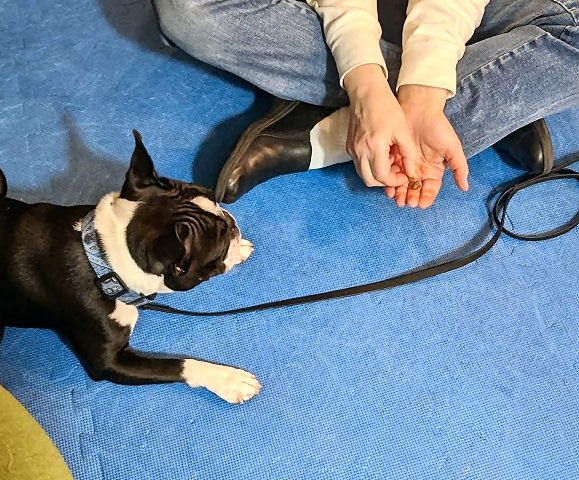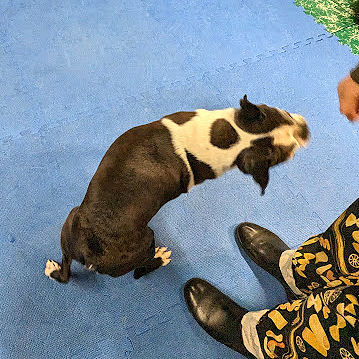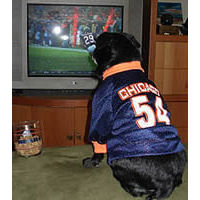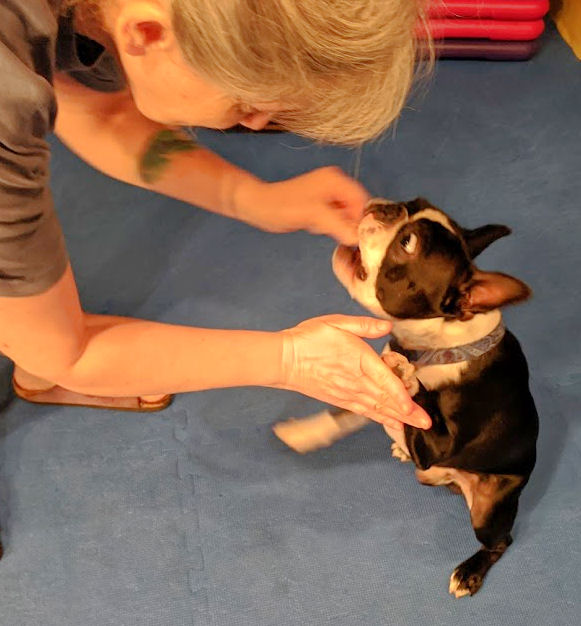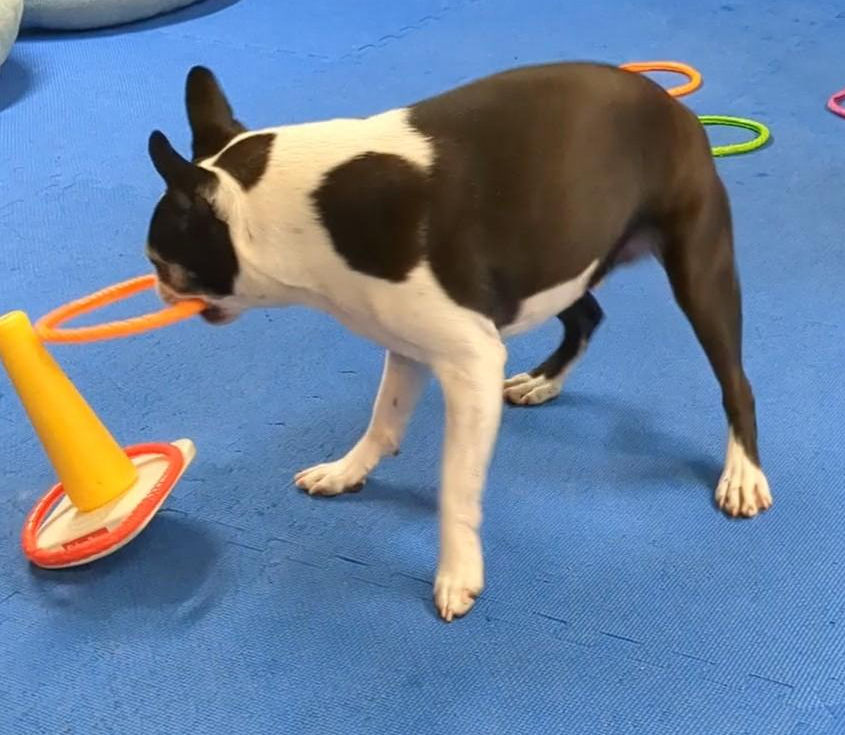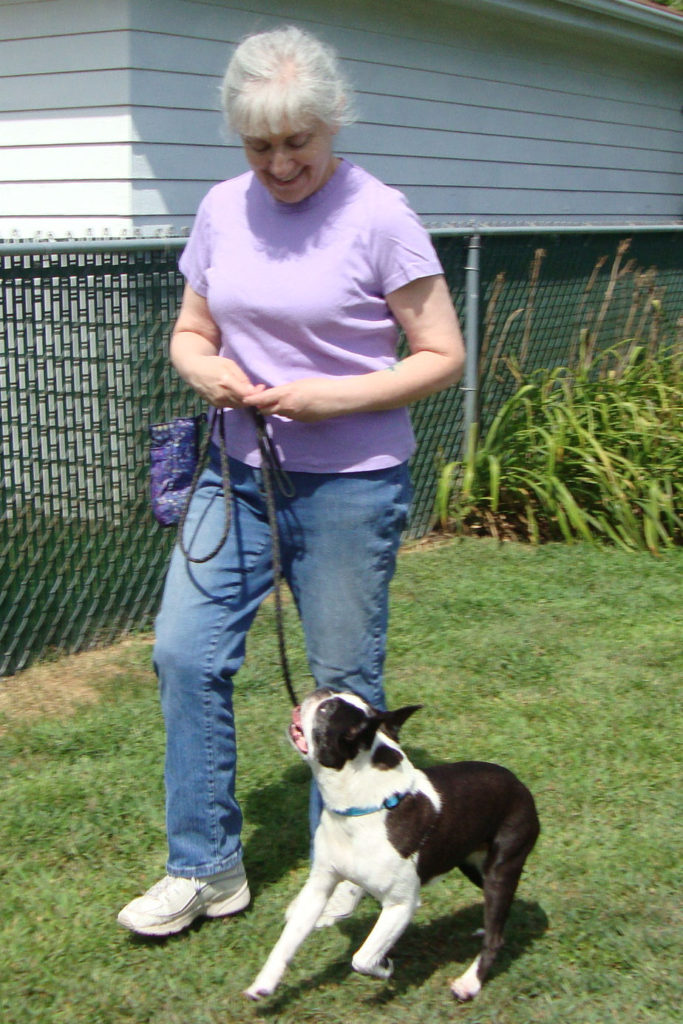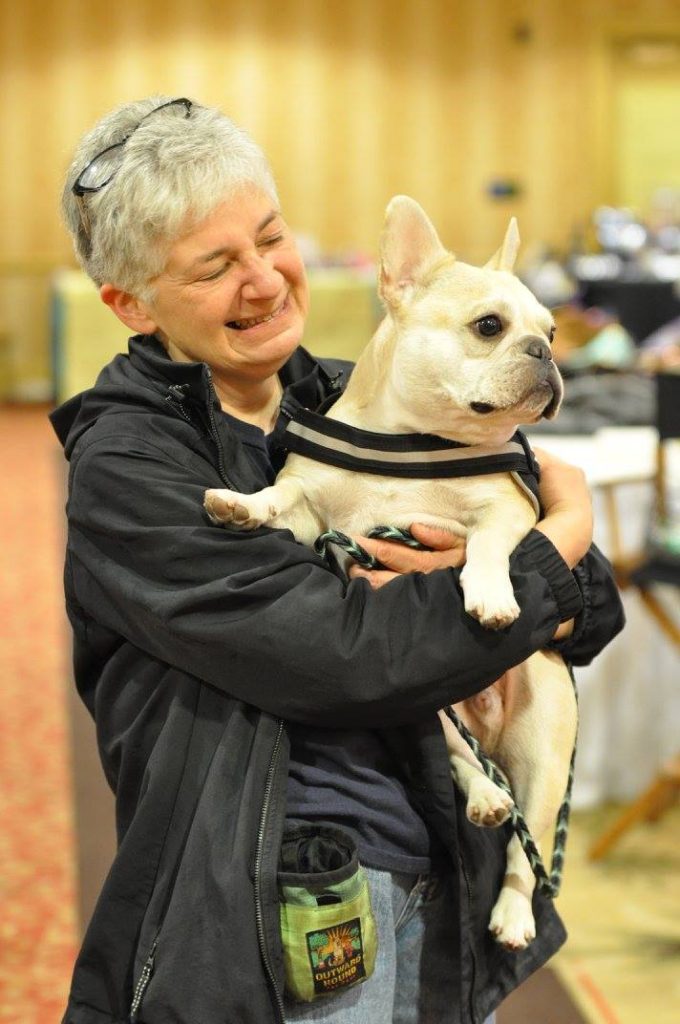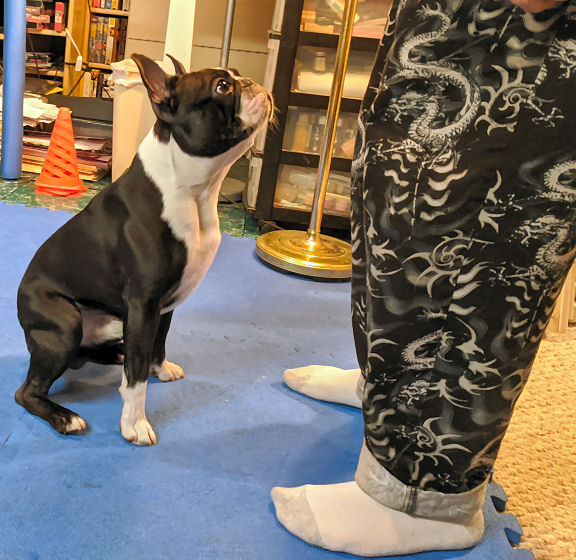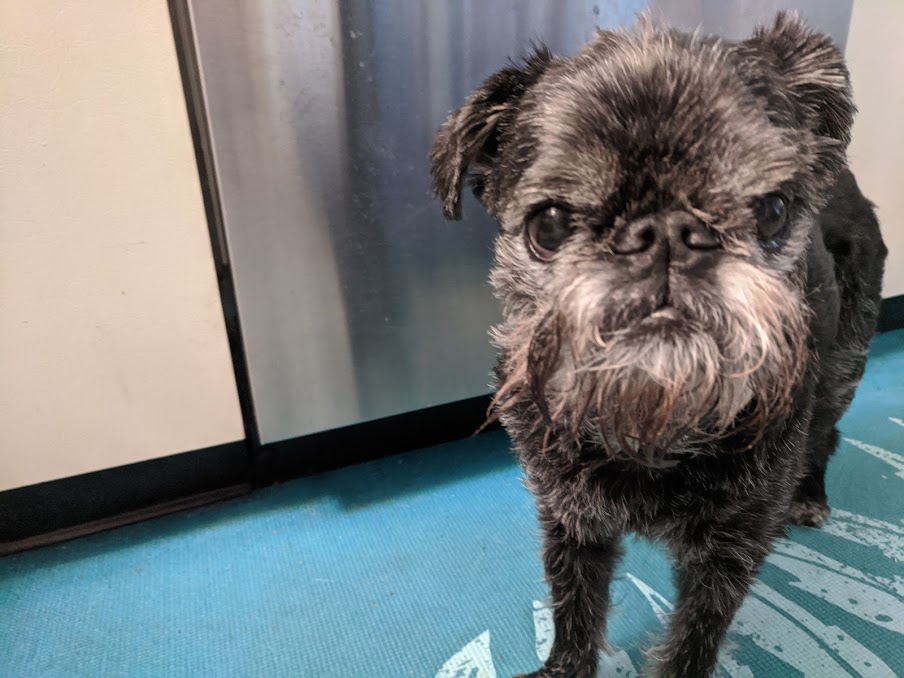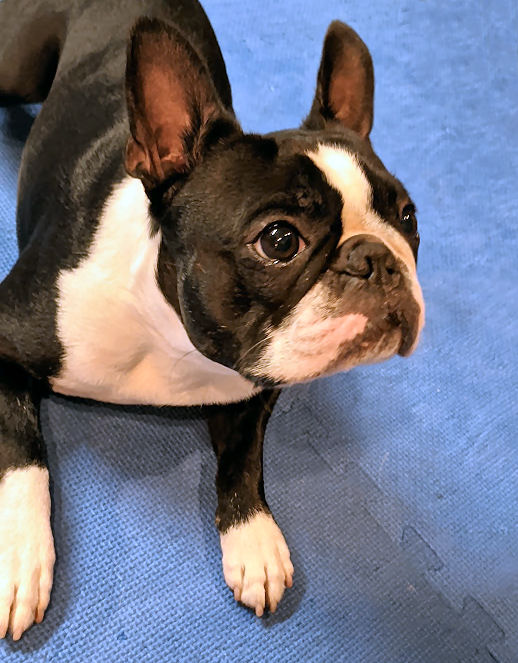
Some people hesitate to try training games because they’re afraid of breaking the dog. It’s not possible. You can confuse your dog. You can even frustrate the heck out of your dog. But whatever you get “wrong” can be fixed. And your dog will always forgive you.
Some dogs worry about getting things “right.” It takes loads of patience and encouragement to convince these dogs that it’s okay to try new stuff, experiment, play around with new behaviors and new stuff. People worry about getting it “right,” too.
We see it in our classes, especially when people bring their children to class. Kids often make terrific dog trainers, because they’re not worried about how they look, whether their dog measures up, or if they’re doing it exactly right.
Here’s the thing – you don’t have to worry about it. If you’re training at home, your dog will love you no matter what you do. And the two of you will figure out what you meant together. If you’re out in public, no one’s looking at you. They’re all looking at your dog and how cute he/she is. And hopefully, how well-mannered and beautifully trained.
Get over yourself
Whether age or experience gave us the gift, we now completely own not caring what other people think. We train our dogs wherever we go. We’re as loud as we need to be. Your dog doesn’t care if you’re doing stuff right, or looking silly. He/she absolutely adores you. And your relationship with your dog only improves the more training games you play.
We’ve noticed in our classes how the person who works more with the dog gets closer to the dog. And the other family members can get a little jealous. Until they realize that your dog can have a different, unique, and tight bond with everyone in the family. Dogs are the epitome of unconditional love. There’s no limit on love. There’s enough for everybody.
Play with your dog
If there’s a particular training game you know would be beneficial for your dog, but you’re not quite sure if you’re playing it right – stop worrying! Do it the best you know how. If you want some clarification – ask us, send a video, post on our social media pages. We’re all over the place; Facebook, Instagram, TikTok, YouTube, email. We check email and messages.
If you want the help, we’re here. But as long as you and your dog understand each other, how you’re training, your way of playing the games, it’s just fine. It’s much more important that you play training games with your dog than the “mechanics” of the games.
Step by step
We try to explain each little step of every game. Demonstrations of the games are in our videos. While the way we do things works, it’s certainly not the only way of doing things. You won’t break your dog if you don’t follow the steps exactly. Your dog may jump ahead several steps. That’s terrific! You don’t have to plod through where it’s not needed. Or your dog may need an even smaller breakdown for some steps. That’s okay, too. Some people love math. Others enjoy history. Some people learn by reading. Others need out-loud presentations. As long as it works, go with it.
The more “tools” you have in your dog-training toolbox, the better off you are. As an example – taking and holding a dumbbell is part of Obedience competition at the Open level. Not all dogs are natural retrievers. Some take to the dumbbell right away. Others just don’t get it. There are lots of ways of teaching a dog to love the dumbbell. Hope’s French Bulldog Torque caught on just with a couple of clicker sessions. Simon, Fran’s Boston Terrier, learned just by watching the other dogs. One dog we know fell in love with the dumbbell when his person tied a string to it and slowly dragged it along for the dog to chase.
Don’t worry that it’s not good enough
The Carpenters had a hit song “Sing” with that lyric – “Don’t worry that it’s not good enough for anyone else to hear. Just sing, sing a song.” Just train. Train your dog!

